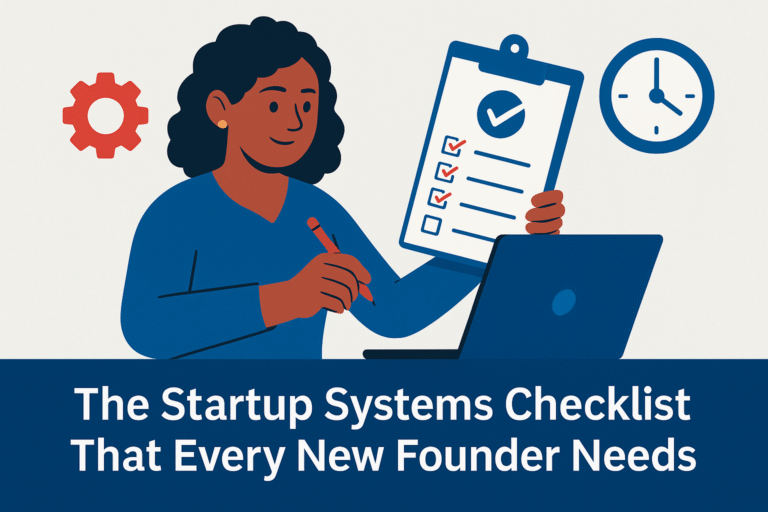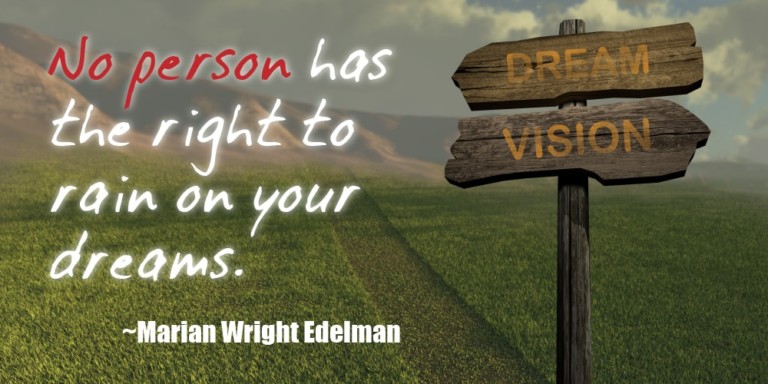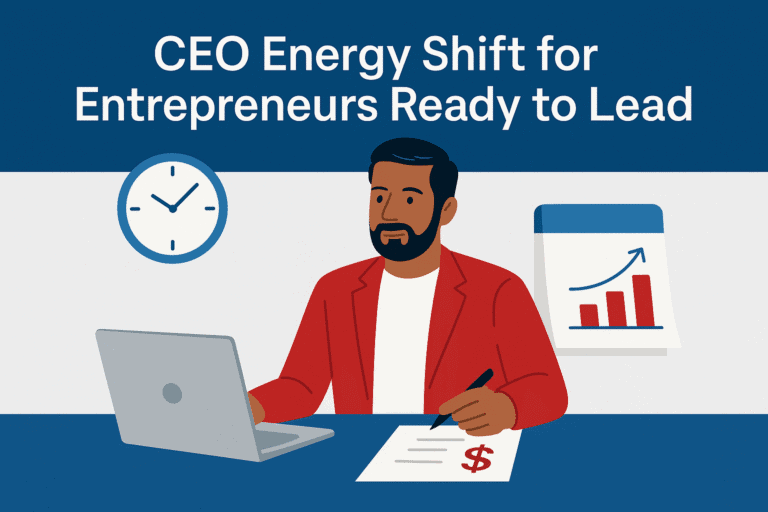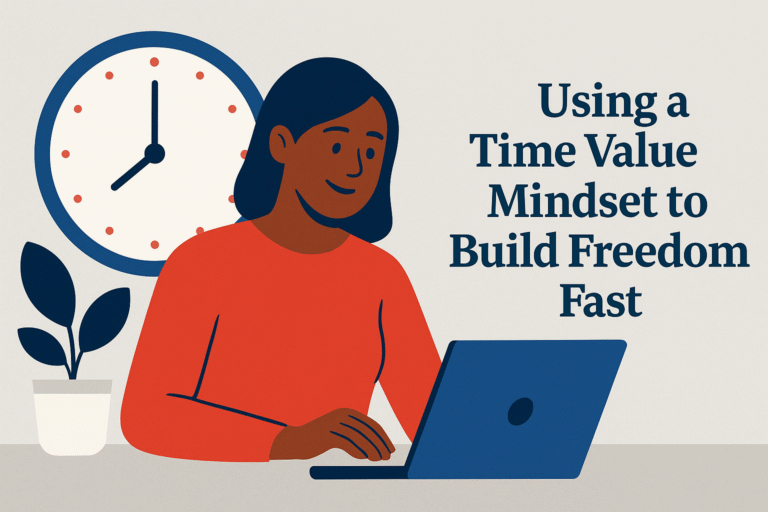CEO Mindset Monday
I’m not the kind of person who waits around for fear to go away before I act. If something matters, I make a plan, I run the numbers, and then I move—even if there’s a little discomfort tagging along.
For me, fear isn’t a red light. It’s background noise. I notice it, sure—but it doesn’t make the decisions. I ask myself two things: What’s the worst that could happen? and What am I willing to risk to move this forward? Once I’ve answered that, I act.
That’s what doing it afraid means. Not leaping without looking. Not ignoring your gut. It’s about moving forward even when you don’t have every variable nailed down. It’s trusting that clarity grows through motion—and that waiting for perfect certainty is just another way to stay stuck.
If you’ve been holding off on starting your business until you feel braver, calmer, or more “ready”—this post is for you. Let’s talk about what it really means to shift from dreaming to doing, and how to lead yourself forward… even if you still feel a little afraid.
The Lie of “Later”
 You’ve got the experience. You’ve got the vision. You may even have a full folder of business ideas or half-written plans.
You’ve got the experience. You’ve got the vision. You may even have a full folder of business ideas or half-written plans.
But if you’re still in the “thinking about it” phase, ask yourself: what exactly are you waiting for?
For most people, it’s not a lack of knowledge or ambition that holds them back—it’s the illusion of perfect timing.
For some, it sounds like “I’ll start once I’ve saved $5,000.” For others, it’s “after this project at work wraps up” or “once the kids are back in school.”
Those milestones feel practical—but they shift every time you get close. That’s the trap. It feels like planning, but it’s really avoidance dressed as productivity. That once things settle down, or they feel more confident, or the path becomes crystal clear… then they’ll move.
But here’s the truth: later is a moving target. Life rarely slows down on its own. Confidence doesn’t arrive without action. And clarity? It shows up while you’re building—not before.
If you’re waiting to feel 100% certain before you start, you’re not being strategic—you’re stalling. Not because you don’t want it, but because you haven’t yet made the mindset shift from “I need to be ready” to “I’m ready enough to begin.”
There’s risk in moving forward, yes. But there’s also risk in waiting too long and watching the window close on what could’ve been something extraordinary.
Fear as a Signal, Not a Stop Sign
Let’s be real: fear shows up for everyone who’s building something real.
Even the most strategic founders feel it—fear of wasting time, of being seen, of making the wrong move. It doesn’t mean you’re doing something wrong. It usually means you’re doing something that matters.
What separates people who stay stuck from those who move forward isn’t the absence of fear. It’s their ability to feel it, assess it, and still take aligned action.

Because fear isn’t always a red flag. Sometimes it’s just your nervous system trying to keep you inside the lines of what’s familiar. But familiar doesn’t mean fulfilling. And if you’re feeling pulled toward business ownership, that discomfort you’re calling fear might actually be readiness trying to break through resistance.
People who succeed don’t wait until the fear goes away. They learn how to move with it—by assessing the risk, naming what’s at stake, and stepping forward with intention.
Fear doesn’t get to drive. But it’s allowed in the passenger seat.
Especially when the destination is freedom.
What Doing It Afraid Actually Looks Like
Doing it afraid doesn’t mean diving off a cliff with no parachute. It means acting with intention—even when some part of you still feels nervous.
For me, that moment came when I invested $500 to register my business. I hadn’t made a single sale yet—but I was clear on what I was building. That one decision made everything feel real. I wasn’t waiting for the fear to disappear. I just wasn’t letting it lead.
That’s what doing it afraid looks like.
It’s:
Saying, “I’m starting a business,” before your website is live
Making your first offer while you’re still refining it
Showing up in your business—even if you feel behind the scenes

And sometimes, “doing it afraid” means starting… pausing… and starting again. That doesn’t mean you failed. It means you’re still in the game. Progress isn’t always tidy—but commitment shows in your return.
Most people imagine big leaps. But real businesses are built through small, repeated acts of courage.
Not fearless ones—just honest, intentional steps that say: I’m building this anyway.
From Ideas to Action: Building While Scared
You don’t need to conquer your fear before you start. You just need to do one small thing that moves your idea forward—while the fear is still present.
That’s how momentum works. It doesn’t come from thinking. It comes from doing. Tiny steps, repeated consistently, will do more for your confidence than any vision board ever could.
If you’re ready to move from dreaming to doing, here are four micro-decisions you can make this week—even if you’re still a little nervous:
Pick your business name. It doesn’t have to be perfect—and yes, you can change it later. But naming it gives the idea shape.
Talk about your offer with one trusted person. Say it out loud. Explain what you’re building, who it’s for, and what it helps with.
Choose a launch date. Even if it’s months away, give your dream a timeline.
Set up a basic payment method. PayPal, Stripe, Venmo—just open the door for income to arrive.
Still feeling stuck? Try asking: What would I do if I believed it was okay to be nervous and still take action?
Sometimes we don’t need less fear. We just need permission to move anyway. Will it feel a little scary? Probably. But motion quiets fear. Planning, overthinking, and waiting? That’s what feeds it.
So don’t wait to feel fearless. Take a step. Make it real. Even a shaky step forward is progress.
The CEO Mindset Shift: Lead Yourself First
Most people think stepping into the CEO role starts when the business is visible—when there’s a brand, a following, or revenue coming in.
But the real shift happens earlier. Quietly. Internally.
It starts the moment you decide to lead yourself.
That means taking action without needing permission. Committing to the idea before the proof shows up. Showing up for your business—even when no one else knows it exists yet.
This is where the CEO mindset is built. Not from titles or logos, but from the ability to move forward while it still feels uncomfortable and unproven.

It’s a kind of self-leadership that doesn’t rely on hype or validation. It’s steady. Clear. And often, it’s lonely—because no one claps for the days you’re building in the dark.
But if you can keep going anyway—if you can hold your vision through that early, quiet stretch—you’re already operating like a CEO.
Want a deeper dive into how to build that mindset? I created a CEO Mindset Mini-Guide to help you lead from where you are, with what you have. No fluff—just a focused, practical shift that can anchor you through the messy middle.
Because before anyone else believes in your business… you do.
Conclusion: Build It Anyway
Fear doesn’t mean you’re not ready. It just means you’re stepping into new territory. And that’s exactly what building a business asks of you—to move before everything is guaranteed, to lead before anyone else is watching, to build something real before you feel fully prepared.
You don’t need more time. You don’t need another course or more market research. You need to decide: Are you willing to do it afraid?
Because the moment you act—even if your hands shake—you shift from dreaming to doing. From “someday” to now. From potential to momentum.
So start where you are. With what you have. In the time you’ve got. You don’t have to go fast—but you do have to begin.
For me, that first $500 felt like a leap. But looking back, it wasn’t the amount that mattered—it was the fact that I moved. That I acted before I had proof. That’s what doing it afraid creates: evidence you can trust yourself.
Your next step doesn’t need to be loud. It just needs to be yours.






